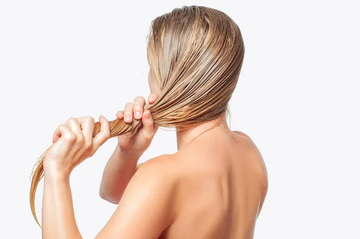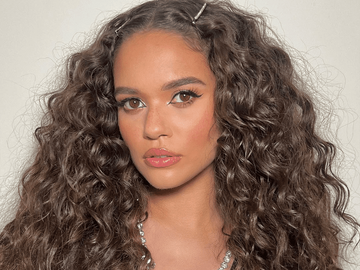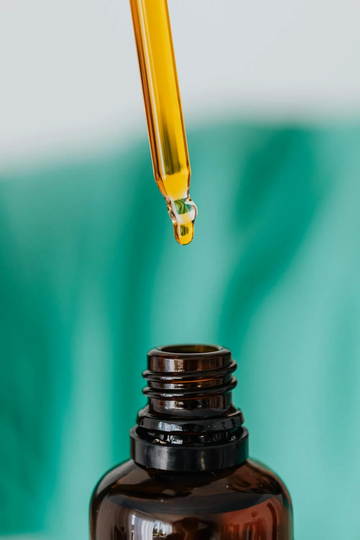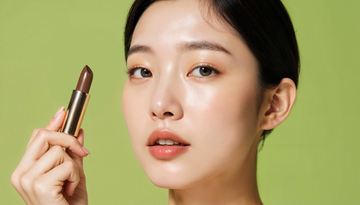Fix damaged hair with these top-rated leave-in conditioners
Across all hair complaints among women worldwide (yes, that big), hair breakage is the ultimate frustration. But contrary to common belief, there’s hope for even the most brittle strands. Whether heat styling, coloring, or environmental stressors have left your hair feeling fragile, the right leave-in conditioner can offer a solid solution, transforming your routine and helping you fix damaged hair.
These hair care heroes go beyond traditional conditioning, offering targeted hydration, protection, and repair to strengthen your strands and prevent further breakage. If you’re searching for the best leave-in conditioner for hair breakage, we’ll discuss everything—from the top products to game-changing application tips and even how to avoid split ends altogether.
Top leave-in conditioners for hair breakage
When it comes to rescuing fragile hair, finding the best leave-in conditioner for hair breakage is essential. These products provide hydration, repair, and protection without the need for rinsing, resulting in stronger, smoother strands less prone to snapping or splitting. Here’s a deep dive into some top-rated leave-in conditioners, plus tips for choosing the one that suits your hair type and specific concerns.
Olaplex No. 3 Hair Perfector
Best for: Severely damaged, over-processed hair
When your hair feels like straw and looks like it’s about to give up, you need a leave-in conditioner that packs a serious punch. Olaplex No. 3 Hair Perfector is renowned for its ability to repair and improve hair health. Enriched with hydrolyzed keratin and panthenol, it works to restore elasticity, smoothness, and strength to severely damaged hair.
– How to use: Apply a generous amount to damp hair, focusing on the mid-lengths and ends where breakage is most common. Leave it on for at least 10 minutes before rinsing out. For optimal results, use it once a week.
Amika Hydro Rush Intense Moisture Leave-In Conditioner
Best for: Fine or oily hair prone to breakage
If you have fine hair, you know the struggle of finding a product that hydrates without weighing it down. Amika’s Hydro Rush Intense Moisture Leave-In Conditioner uses hyaluronic acid and squalane to give hair softness and shine without greasiness.
– How to use: Spritz lightly over towel-dried hair, concentrating on the ends. Avoid the scalp area to maintain volume. This is a great option for daily use or as a midday refresh to prevent dryness.
Moroccanoil All-in-One Leave-In Conditioner
Best for: Color-treated or chemically processed hair
Hair coloring can leave your strands vulnerable to damage, but a color-safe leave-in conditioner can help preserve both your hue and your hair’s health. Moroccanoil’s All-in-One Leave-In Conditioner contains argan oil, which hydrates and strengthens hair without leaving it greasy.
– How to use: Apply evenly to damp hair after washing. For added protection, use before heat styling to shield against thermal damage.
K18 Leave-In Molecular Repair Hair Mask
Best for: Intensive damage repair
The K18 Leave-In Molecular Repair Hair Mask is praised for its ability to reverse damage in just four minutes, making it ideal for those with brittle strands and breakage.
– How to use: After shampooing, towel dry hair thoroughly. Apply a small amount of the mask evenly throughout the hair, from roots to ends. Do not rinse out. Allow the product to work for four minutes before styling as usual.
SheaMoisture Jamaican Black Castor Oil Strengthen & Restore Leave-In Conditioner
Best for: Natural and curly hair
This leave-in conditioner is formulated to strengthen and restore natural and curly hair types, reducing breakage and promoting healthy growth.
– How to use: Apply a generous amount to clean, towel-dried hair. Gently comb through for even distribution. Do not rinse. Style as desired.
Tips for choosing the right leave-in conditioner
Not all leave-in conditioners are created equal. To find the best leave-in conditioner for hair breakage, consider your hair’s specific needs:
– Fine or thin hair: Opt for lightweight, non-greasy formulas that won’t weigh hair down.
– Thick or coarse hair: Look for richer, creamier products that provide deep hydration and manageability.
– Heat damage: Choose products with thermal protectants to shield hair from further harm.
– Chemical damage: Seek out formulas that repair the cuticle and strengthen the hair shaft.
– Environmental stress: Look for leave-ins with antioxidants and UV filters to combat pollution and sun exposure.
– Keratin, biotin, and amino acids are key for repairing and rebuilding damaged strands.
– Natural oils like argan, coconut, or jojoba provide intense hydration and shine.
– Avoid sulfates, parabens, and heavy silicones, which can cause buildup and exacerbate damage.

How to use leave-in conditioners for maximum results
Using a leave-in conditioner correctly can make all the difference in your journey to fix damaged hair. While these products are designed to repair and protect, improper application can lead to buildup or less-than-ideal results. Follow these step-by-step instructions and tips to get the most out of your leave-in conditioner.
Step-by-step instructions for application
-
Start with clean, damp hair.
For the best absorption, apply your leave-in conditioner on freshly washed hair. After shampooing and conditioning (if needed), gently towel-dry your hair to remove excess water. Avoid vigorous rubbing, which can cause further damage to fragile strands. -
Apply the product to the right areas.
Focus on the mid-lengths and ends of your hair, where damage tends to be most noticeable. These areas are often drier and more prone to breakage. Avoid applying directly to the roots unless the product specifically states it’s safe to do so. -
Use the right amount.
Start small; more isn’t always better. Use a dime-sized amount for short hair, a nickel-sized amount for medium hair, and a quarter-sized amount for long hair. Overloading your strands can weigh them down and lead to buildup. -
Distribute evenly.
Use your fingers or a wide-tooth comb to distribute the product evenly through your hair. This ensures every strand gets the care it needs without clumping or over-coating. -
Let it absorb.
Allow the leave-in conditioner to sit for a few minutes before styling to give it time to penetrate the hair shaft. If you’re air-drying, let your hair dry naturally; if you’re using heat tools, apply a heat protectant over the leave-in conditioner.
Pro tips, summarized
– Apply on damp hair. Damp hair absorbs the product better than soaking wet or dry hair. After washing, gently towel-dry your hair before applying your leave-in conditioner.
– Focus on the ends. Concentrate the product on your mid-lengths and ends, where damage is typically most severe. Avoid overloading the roots to prevent greasiness.
– Don’t overuse. More isn’t always better. Start with a small amount and add more only if needed—this prevents buildup and ensures a lightweight finish.
– Combine with heat protection. If you’re styling your hair with heat, layer a heat protectant over your leave-in conditioner for extra defense against breakage.
DIY and natural options for leave-in care
If you’re looking for a more personalized or eco-friendly way to care for your hair, DIY and natural products are fantastic alternatives to store-bought solutions. Not only can you tailor your leave in conditioner to meet your specific needs, but you can also reduce your environmental impact with minimal packaging and natural ingredients. Let’s dive into simple DIY recipes and the best natural leave-in conditioners for eco-conscious hair care.
Aloe vera and coconut oil spray
Best for: Hydration and repair
Ingredients:
– 1 cup distilled water
– 2 tablespoons aloe vera gel
– 1 teaspoon coconut oil
– 5 drops lavender essential oil (optional for scent)
How to make:
- Heat the distilled water slightly to help the ingredients mix.
- Combine all ingredients in a spray bottle and shake well.
- Store in the refrigerator and shake before each use.
How to use:
Spritz the mixture onto damp hair, focusing on the ends. The aloe vera hydrates and soothes the scalp, while the coconut oil helps fix damaged hair and adds shine.
Apple cider vinegar and argan oil conditioner
Best for: Smoothing and detangling
Ingredients:
– 1 cup water
– 2 tablespoons apple cider vinegar
– 1 teaspoon argan oil
How to make:
- Mix the water and apple cider vinegar in a spray bottle.
- Add the argan oil and shake well.
How to use:
Apply lightly to towel-dried hair. The apple cider vinegar smooths the cuticle for less frizz, while argan oil provides hydration without weighing your hair down.
Shea butter and jojoba cream
Best for: Thick or coarse hair
Ingredients:
– 2 tablespoons shea butter
– 1 teaspoon jojoba oil
– 1 teaspoon glycerin
How to make:
- Melt the shea butter in a double boiler until soft.
- Add the jojoba oil and glycerin, stirring until blended.
- Let the mixture cool and store in an airtight jar.
How to use:
Take a small amount and work it through damp or dry hair, focusing on the ends. This rich formula is perfect for locking in moisture and defining curls.
Natural product options for eco-conscious care
If DIY isn’t your thing, there are plenty of natural leave-in conditioner products that align with an eco-conscious lifestyle. These options are formulated with sustainable ingredients and often come in recyclable or biodegradable packaging.
-
Innersense Sweet Spirit Leave-In Conditioner
This plant-based leave-in conditioner is packed with organic ingredients like aloe vera, rice protein, and honey extract. It hydrates, detangles, and protects without any synthetic fragrances or harsh chemicals. Plus, Innersense is committed to sustainable practices and eco-friendly packaging.
-
Acure Ultra Hydrating Leave-In Conditioner
Acure’s leave-in conditioner features argan oil and pumpkin seed oil to nourish and strengthen hair. It’s vegan, cruelty-free, and made with 100% recyclable materials, making it a guilt-free addition to your hair care routine. -
Rahua Leave-In Treatment
Rahua is a luxury natural hair care brand that uses sustainably harvested Amazonian oils to protect and repair hair. This leave-in conditioner is silicone-free and infused with quinoa, green tea, and rahua oil to keep hair hydrated and resilient.
Why choose natural leave-in conditioners?
– Gentler on hair and scalp: Natural formulas are free of sulfates, parabens, and synthetic fragrances that can irritate sensitive skin.
– Eco-friendly packaging: Many brands focus on reducing plastic waste with glass bottles or refillable options.
– Sustainable ingredients: By sourcing organic or fair-trade materials, these products support ethical farming practices and reduce environmental impact.
Making the most of natural options
Whether you go the DIY route or choose a ready-made natural product, consistency is key. Pair your leave-in conditioner with other eco-friendly practices, like using a bamboo hairbrush or air-drying your hair to minimize heat damage. These small steps can make a big difference in your hair health and your carbon footprint.
By embracing natural solutions, you’ll not only nourish your hair but also contribute to a more sustainable future—one strand at a time.
Stronger, healthier hair starts here
You don't have to struggle to care for your hair. With the right leave-in conditioner, you can repair damage and protect your strands. Whether you opt for a top-rated product, DIY recipe, or eco-friendly alternative, there’s an option that fits your lifestyle.
By incorporating these leave-in heroes into your routine and following proper application techniques, you’ll be on your path to smoother, stronger, and more resilient hair. If we had to sum it all up, what is the most important rule to keep your locks looking and feeling great? A commitment to consistency and care.





